Submitted by WA Contents
Eight diagonal light tubes are protruding from tea house to grasp prolonged sunlight hours by DnA
China Architecture News - Aug 19, 2021 - 12:02 4265 views
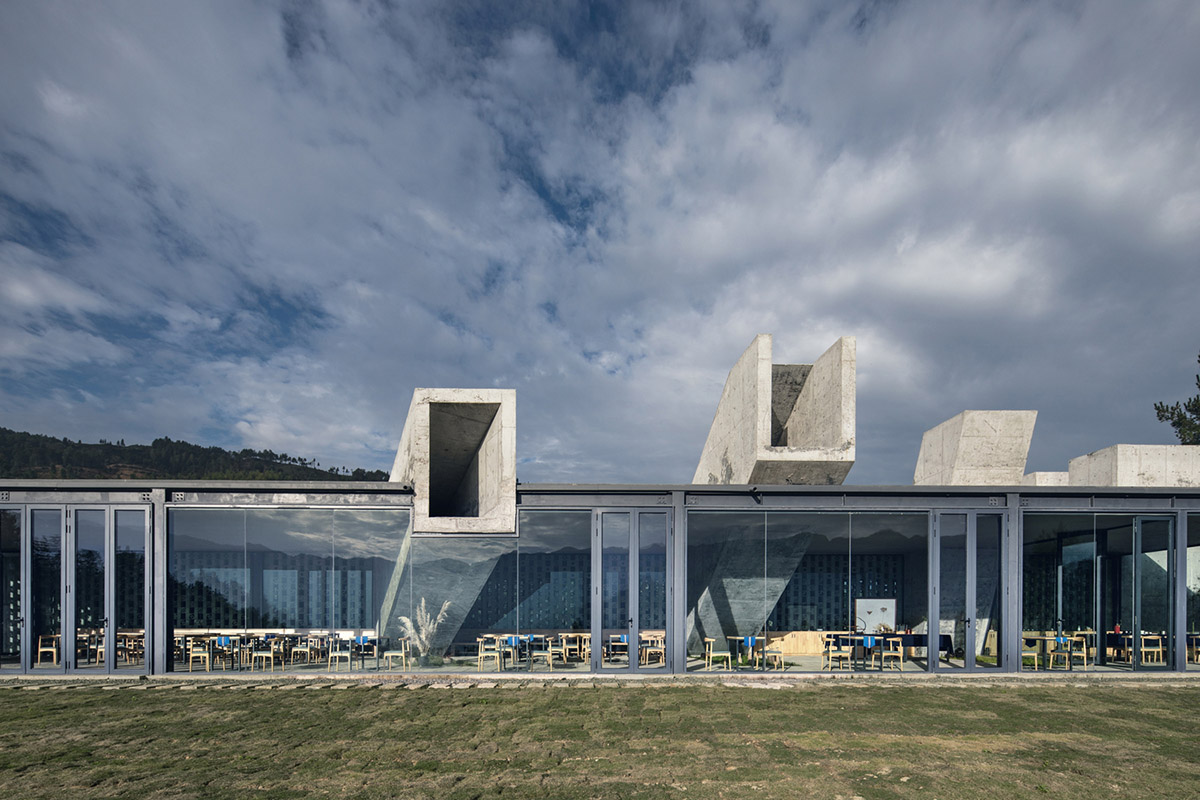
Interdisciplinary architecture practice DnA_Design and Architecture has used eight diagonal concrete light tubes to grasp the most prolonged sunlight hours and the highest solar angle to this tea house in Lishui, China.
Named Huiming Tea Space, the 934-square-metre building is located in Jingning County, part of Lishui City, Zhejiang Province, is the only She ethnic minority autonomous county in China.
The building was designed to serve the local community and the surrounding villagers as a new facility for their tea plantation, production processes and workshop facilities.

"The She ethnic minority moved to Jingning, Zhejiang Province from Luoyuan, Fujian Province in the second year of the Tang Dynasty (766 AD). It was originally part of the Southern Chinese nomads. Chimu Mountain, located 10 miles southeast of Jingning County's urban center," said DnA.
"The northeast half of Chimu Mountain, warm in winter and cool in summer and steaming with clouds and fog, is favorable for tea plantations."
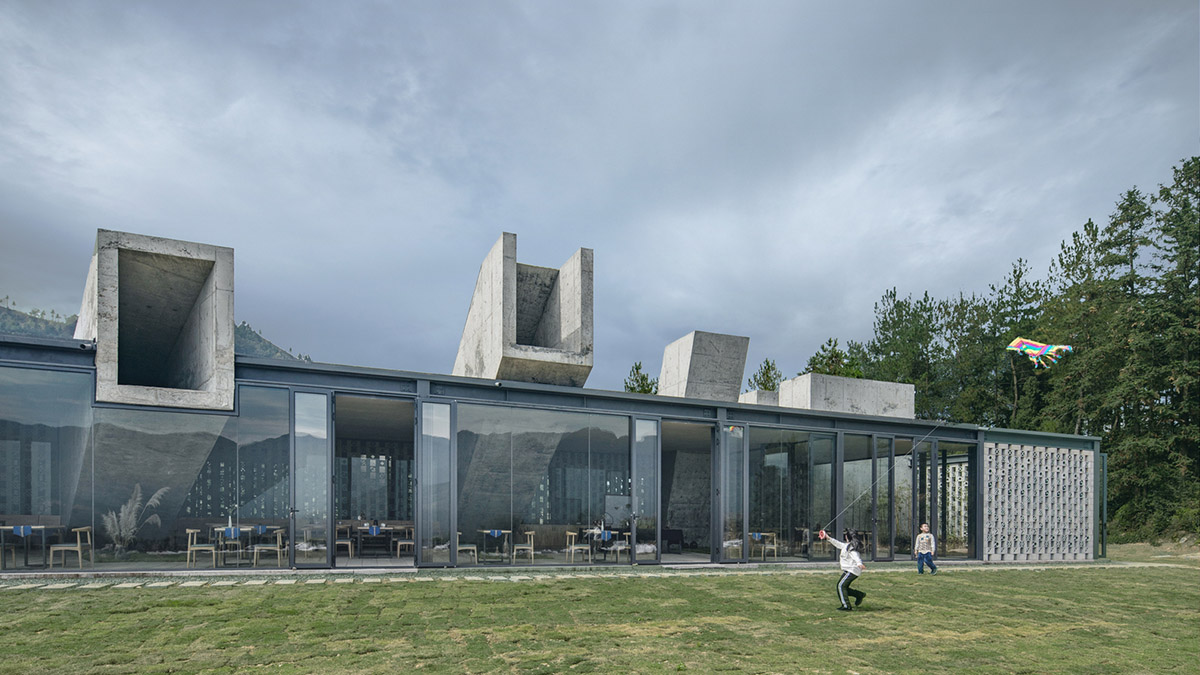
"Monk Huiming of the Tang Dynasty had built a temple here, who cleared the land around the temple with the She people to plant tea," the firm added.
"Named after the monk, Huiming tea has had thousands of years of history and deep cultural heritage. In the mid to late 1970s, several villages near the Huiming Temple were re-integrated, together with their tea plantations set up a standard and consolidated Huiming tea production."
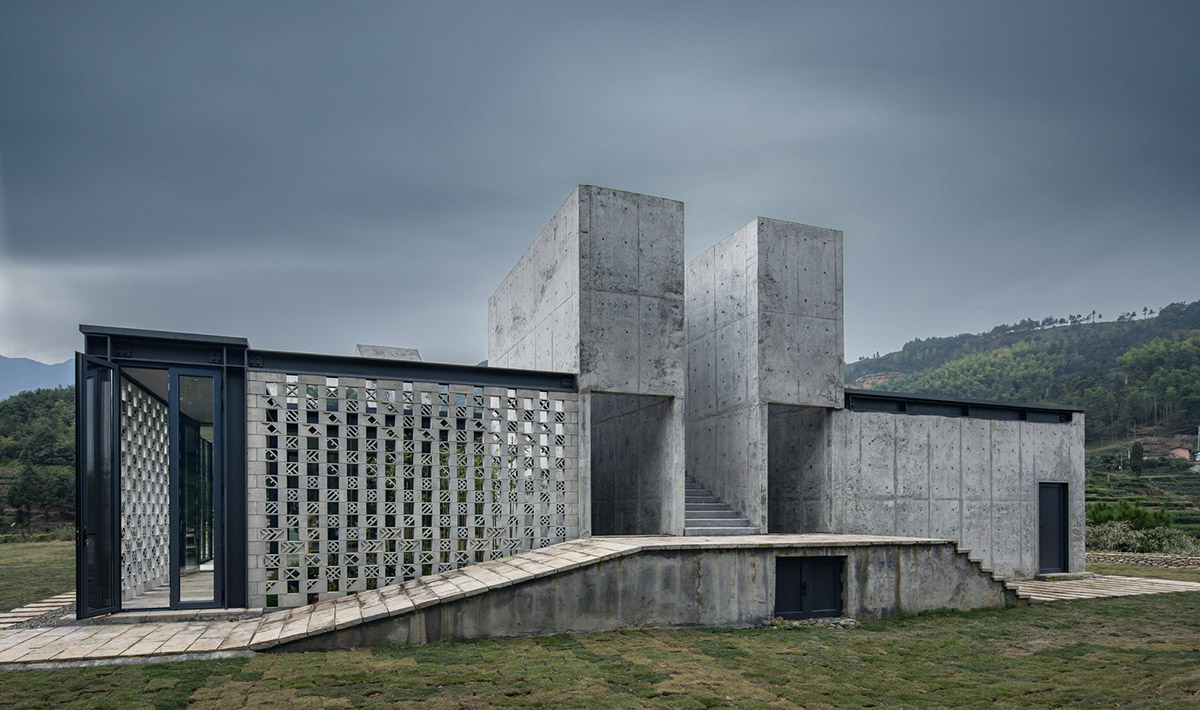
Led by the Chimu Mountain Scenic District Management Committee, DnA has designed the Huiming Tea Workshop to function as a new facility for visitors to the scenic area and a place for the daily activities of the surrounding villagers.
The new facility would showcase the traditional Huiming tea production process, integrate the local She culture with Buddhist culture, and was intended to become a space for Zen tea workshop for the nearby Huiming Temple in the future.
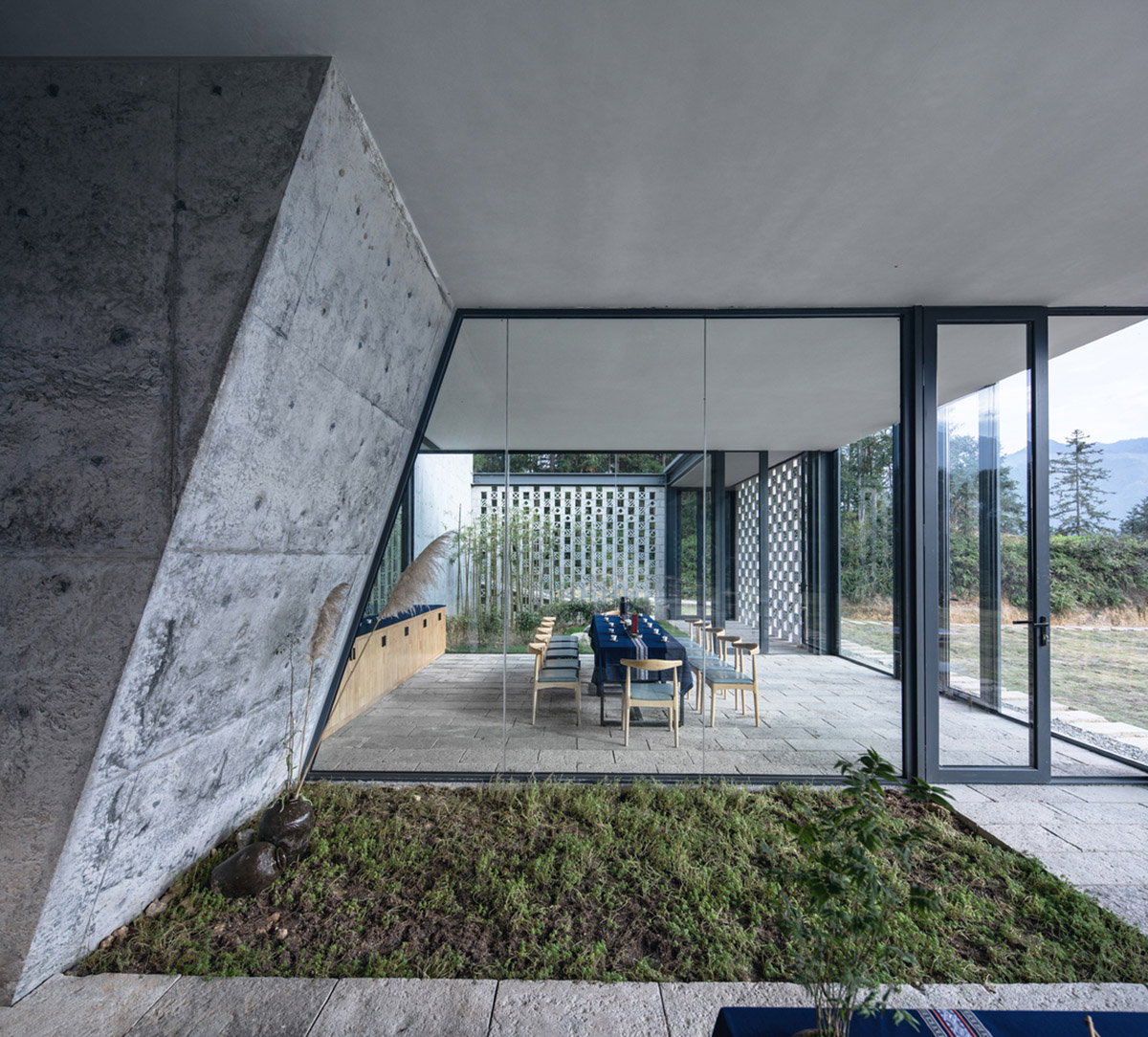
The project is located in the mid-level tea plantation on the north side of Huiming Temple, while the site is flat and runs in north-south directions.
The building faces a cluster of pine trees on the north hill and the temple gate to the south. "Most of the surrounding area has been reclaimed for tea plantation, including leveled terrain to the west, a large drop to the east, and an overview of the county at the foot of the hill to the northeast," as the architects explained.
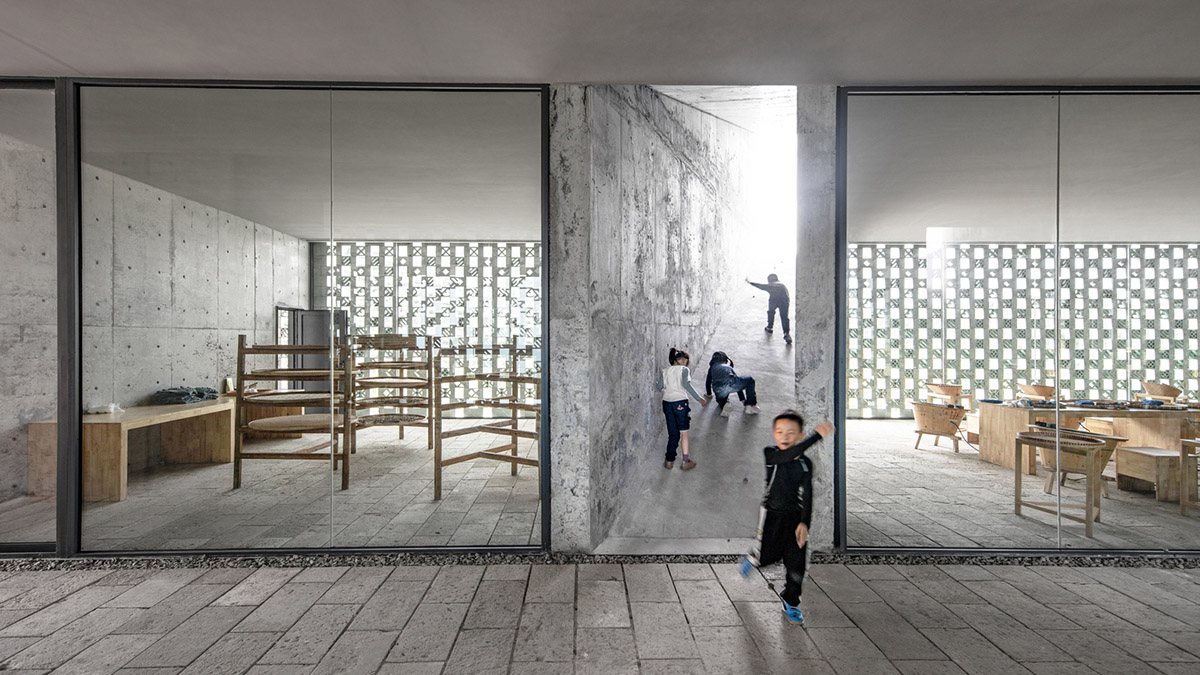
The site has a unique topography and the surrounding natural and human environment provide this project with more possibilities.
Huiming Tea Space is designed as a one-story horizontal block, evoking the gradation of the surrounding tea plantation terraces. Based on the contextual parameters of the site’s direction and scale, the building consists of three parallel spaces running north-south: a traditional Huiming tea-making workshop facing the tea plantation, a tea-tasting space facing the distant mountains to the east, and an open corridor in the middle as a visitor lounge for observing the tea-making process.

The architects aimed to create a space where tea making and tea tasting can complete in one cycle in experiencing tea culture.
In the middle, there is a visitor lounge that is open to the public and a place for rest for both villagers and visitors. The traditional picking and processing of Huiming tea in its harvest season-best showcases and demonstrate this craft and will be the most intuitive “agricultural production exhibition” on display.
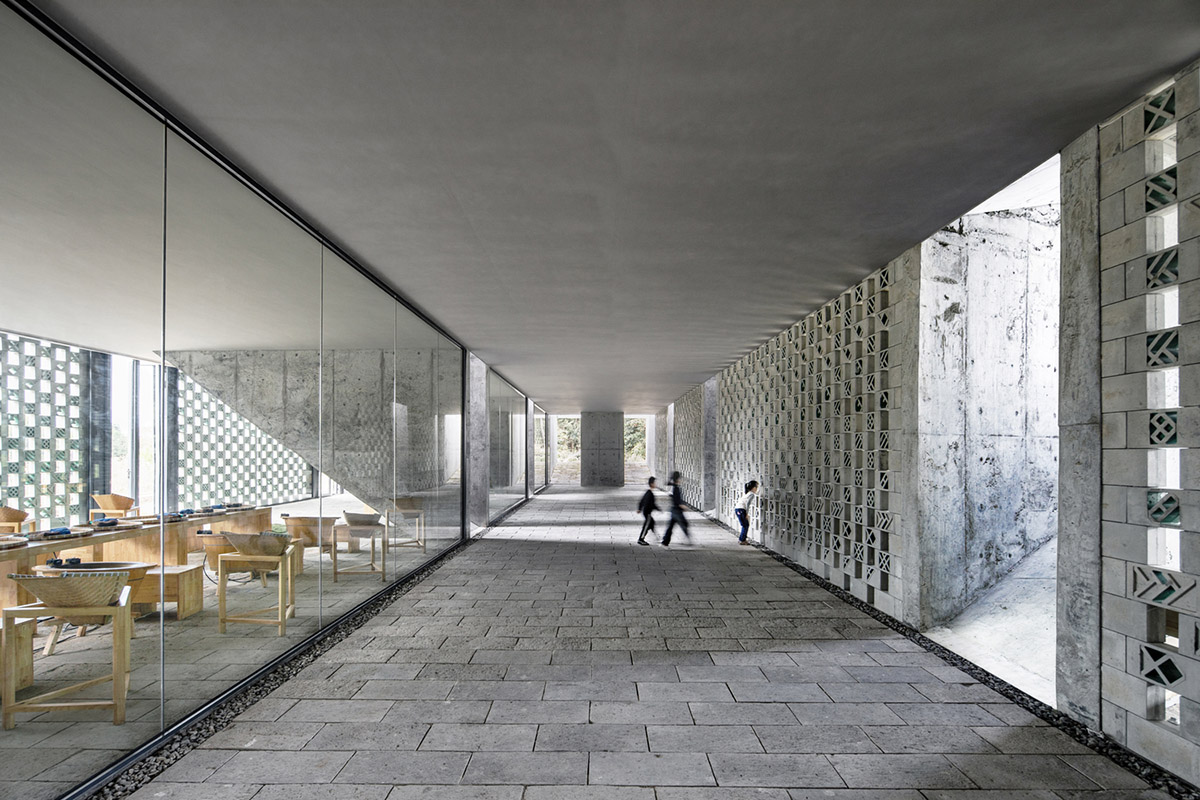
Perforated block walls from the east wall of both the workshop and the tearoom, they protect the workshop as sunshades and separate the tearoom from the visitor lounge.
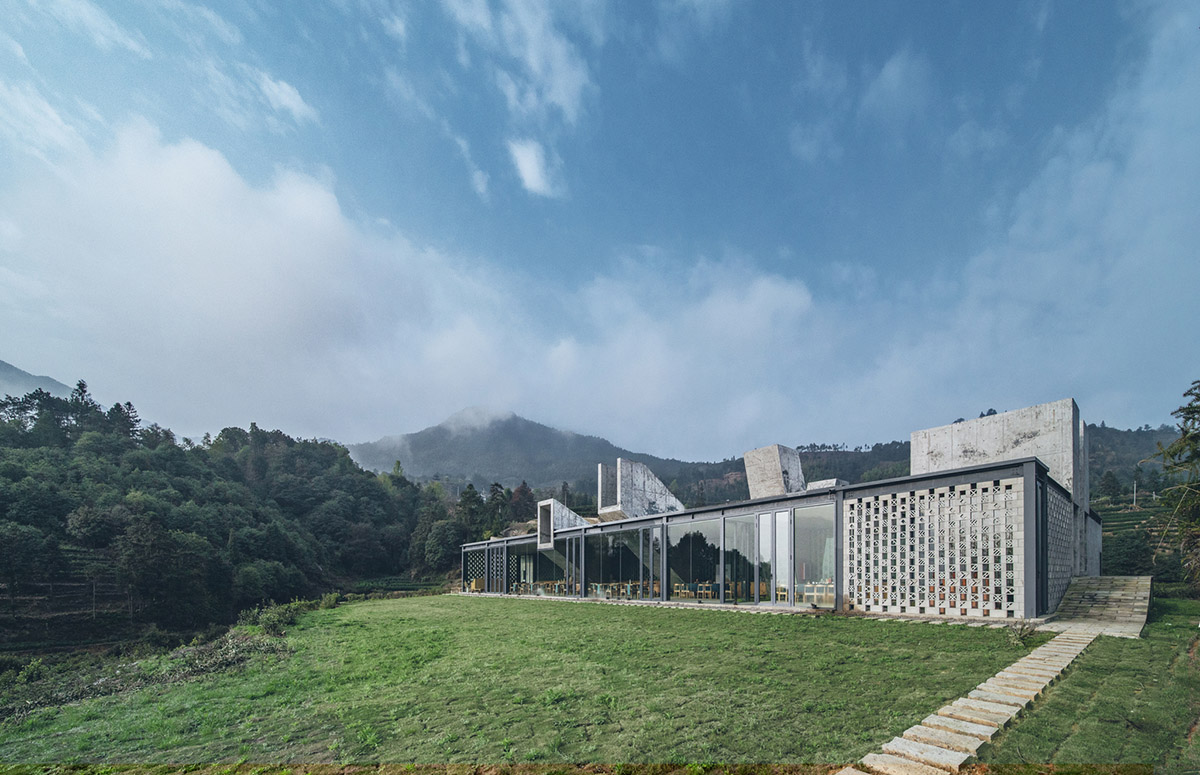
For the patterns of the wall, the architects created the prefabricated patterns of the blocks composed of She pictograms. "Historically, the She people have a functional oral language without a writing system. Some symbolic graphics formulated over their long-term production and labor to convey simple meanings," added the firm.
"The She pictograph blocks on the wall are arranged vertically according to the meaning of the symbols, from the land at the bottom to the sun at the top, re-configuring the She mountain farming and hunting scene, which is the second layer of cultural display of the space."
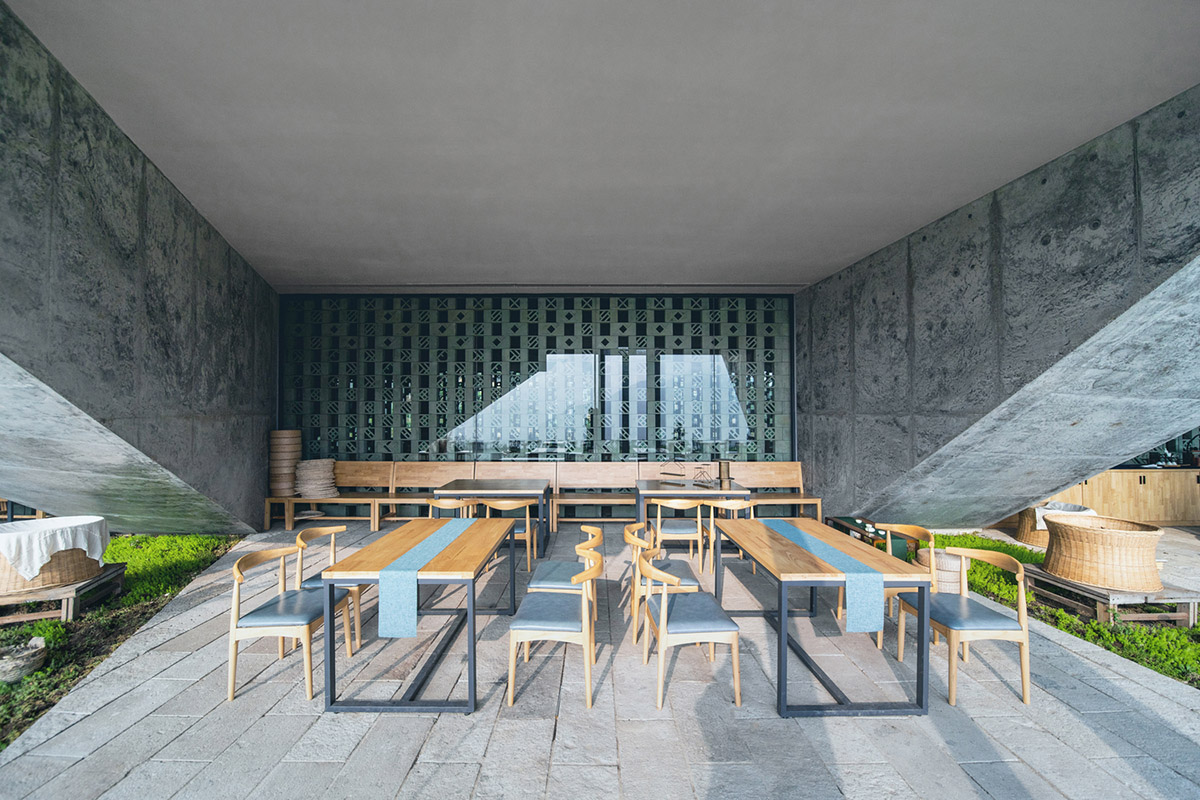
Through these patterns, natural light comes into the visiting corridor, which runs for nearly fifty meters, has eight light tubes in addition to the entrance and exit at both ends.
The choreography of the direct sunlight passing through these tubes indicates the basic rhythm of nature and agriculture.
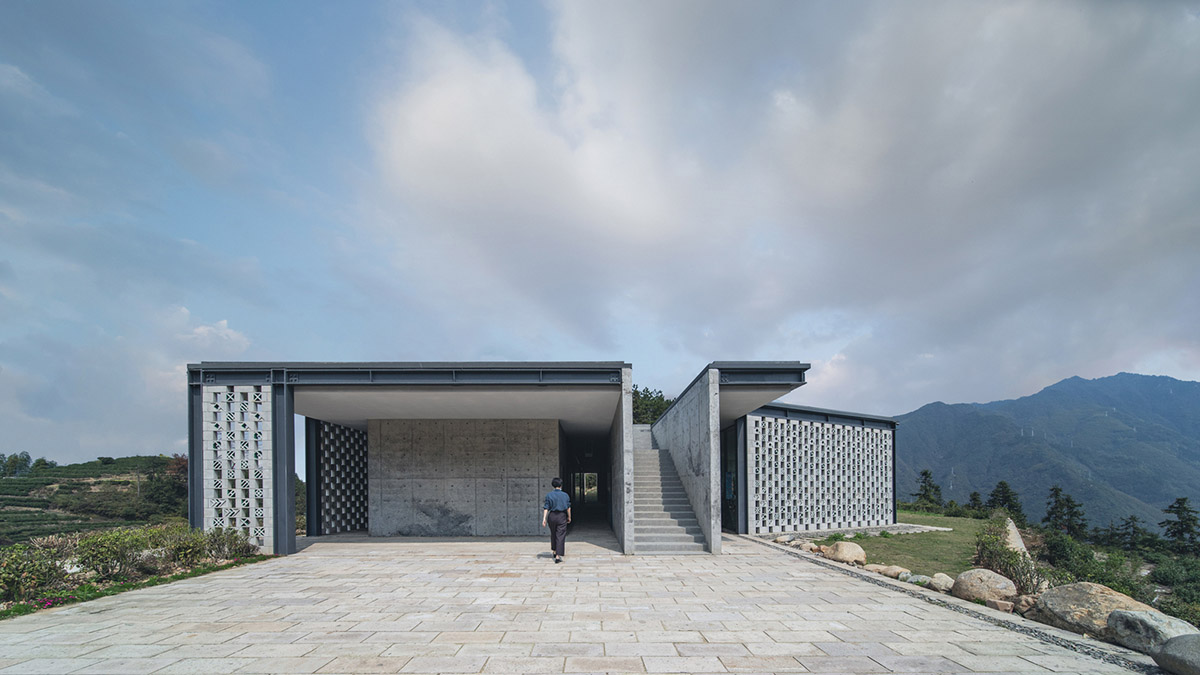
The sunlight is the key aspect for this project. The architects said: "In ancient China, a year is divided into the 24 Chinese solar terms as the agricultural calendar to indicate the alternation of seasons and climate changes. A day is divided into 12two-hour periods according to each zodiac animal’s activity pattern."
"With the most prolonged sunlight hours and the highest solar angle, the summer solstice is also the first of the twenty-four solar terms to be discovered in Chinese history."
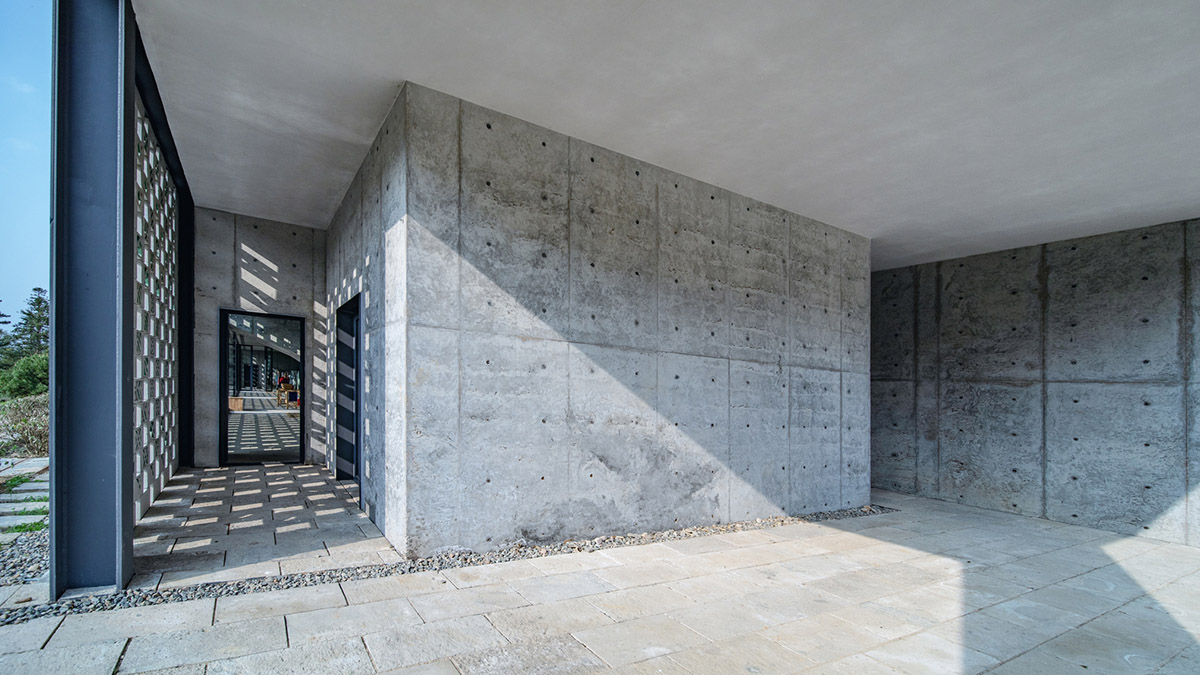
For this reason, the architects designed the angles and orientations of these eight light tubes by considering the sunlight slopes of the seven Chinese zodiac hours of the summer solstice from sunrise at dawn to sunset at dusk.
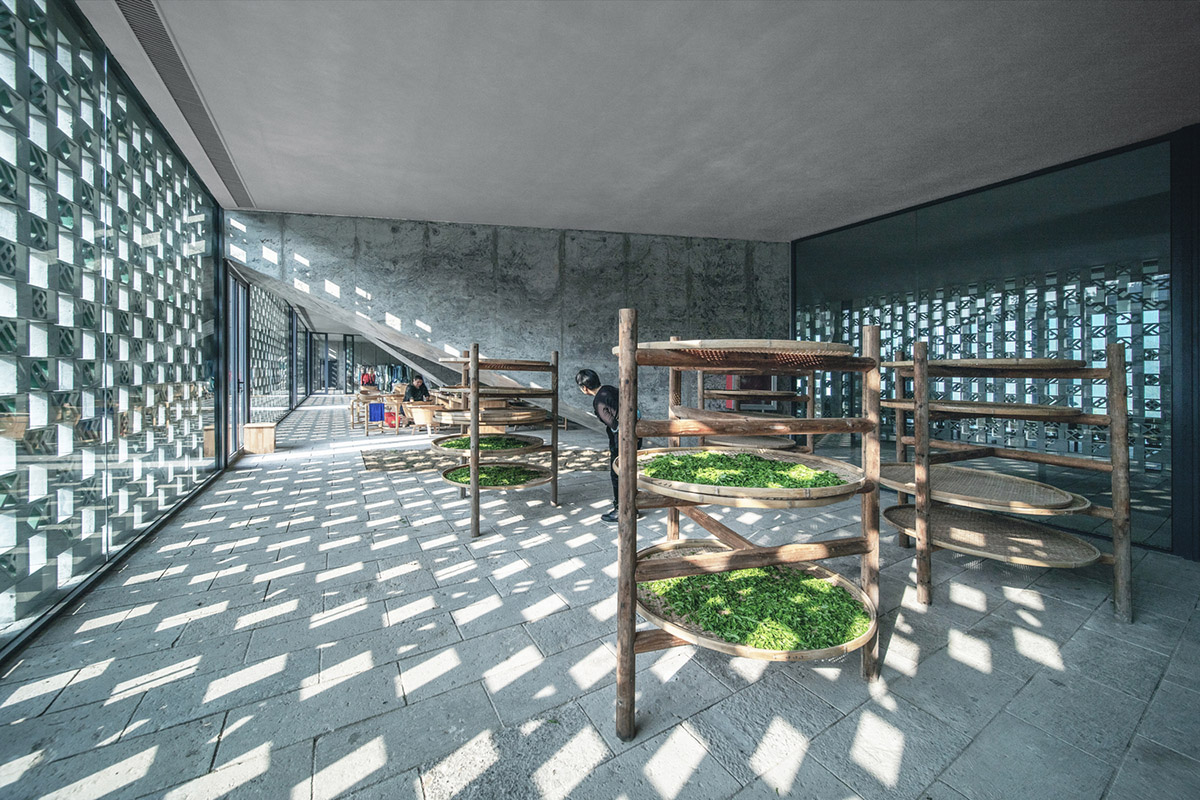
"The three-light tubes of the morning sunlight hours are at rabbit house 5-7 am, dragon hour 7-9 am, and snake hour 9-11 am, intersect from the east tearoom into the visitor lounge, dividing the tea tasting space into four areas, from the public tea space to the small individual tearooms," the firm continued.
"At horse hour 11 am-1 pm, the two parallel light tubes located at the northern end of the visitor lounge indicate the transition of paths."
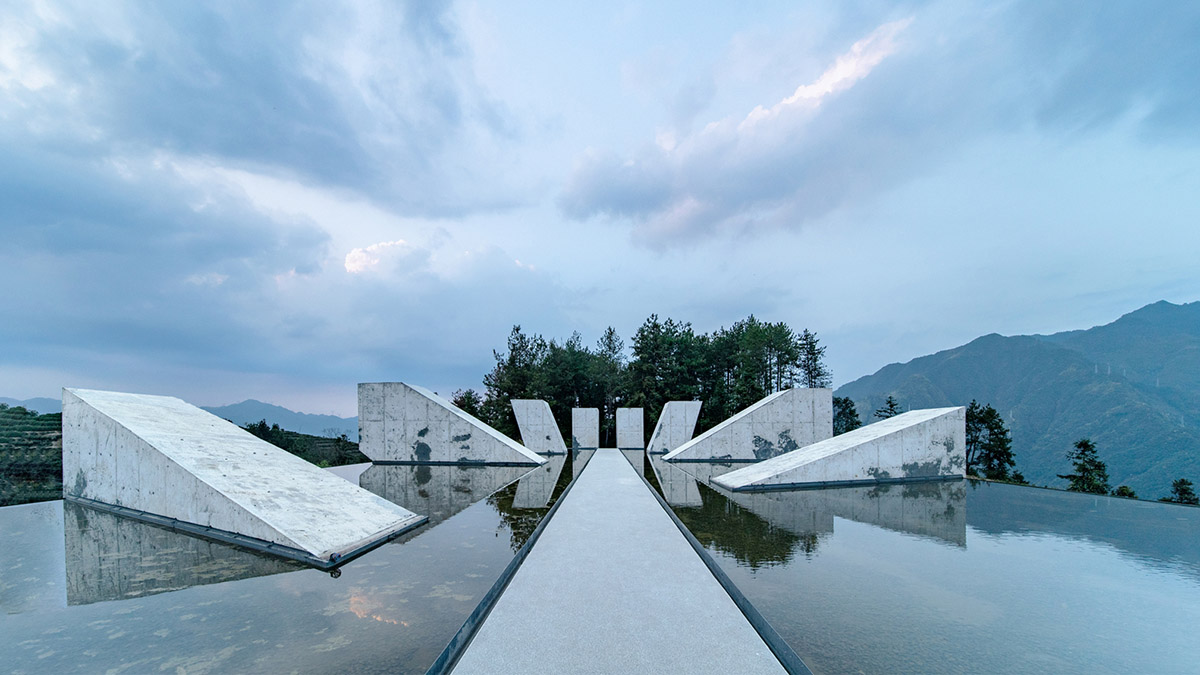
"The three-light tubes of the afternoon sunlight hours: at goat hour 1-3 pm, monkey hour 3-5 pm, and rooster hour 5-7 pm, intersect into the tea workshop in the west, dividing the workshop into four processing zones based on traditional tea production procedure. Around the summer solstice, the direct sunlight of each zodiac hour can only enter the visitor lounge space through the corresponding light tubes. From sunrise to sunset, the natural light passing through different forms of light tubes flows into the space through the various tracks, serving as a sundial to outline the trajectory of time."
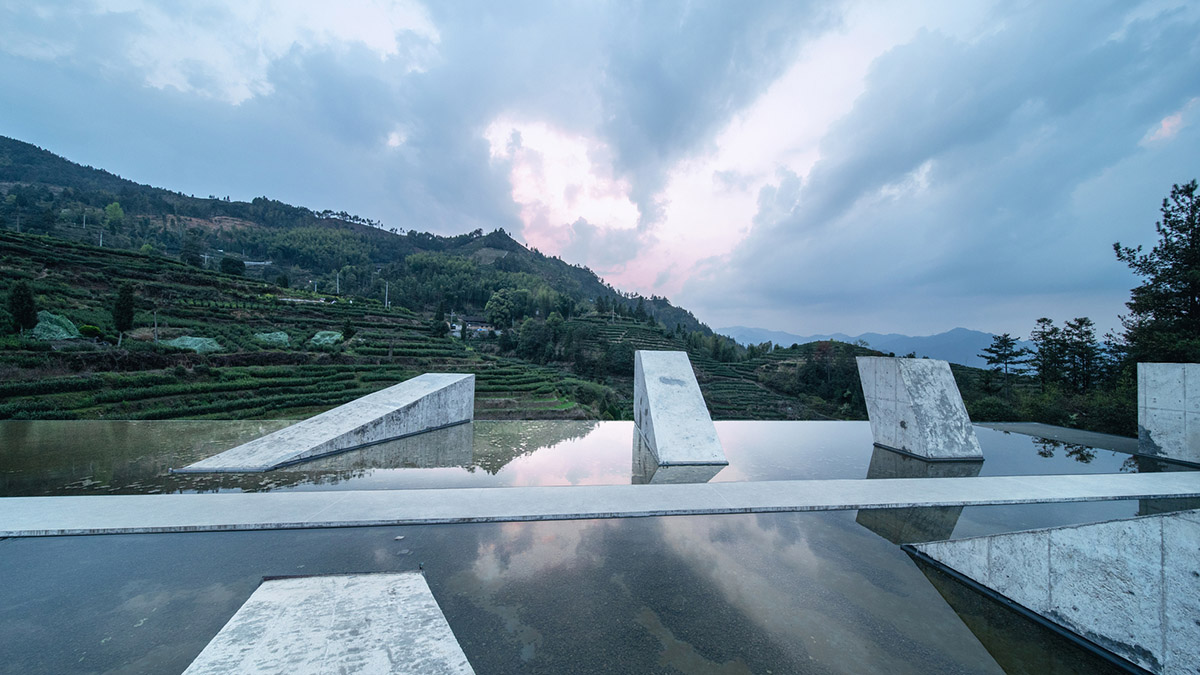
The team added that "In the agricultural era, the daily life circle of Chinese tradition “Working from sunrise, Resting when the sun sets”, together with the circles of all lives, animals or plants, are all based on the natural pattern of sun and light."
"The space of tea is not only to integrate production and activity but also to reveal the basic law of nature and the spirit of Zen Buddhism, implying the third layer of exhibition content."
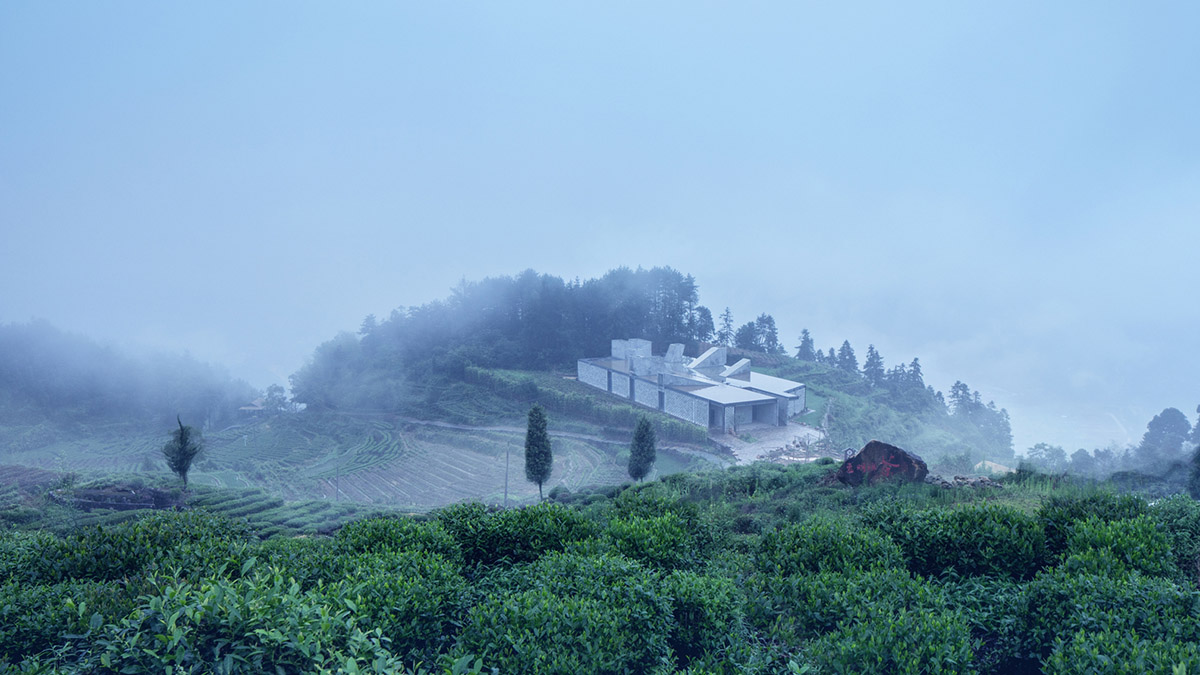
The architects covered the rooftop is covered with a thin layer of water to dissipate summer heat. They placed a linear walkway in the middle that forms a loop with the indoor visitor path, and that leads to the Huiming temple atop the mountain.
The eight tubes, the main distinctive character of the building, are protruding from the roof, angled at various inclinations and heights to represent the sun's altitude at various times of the summer solstice.
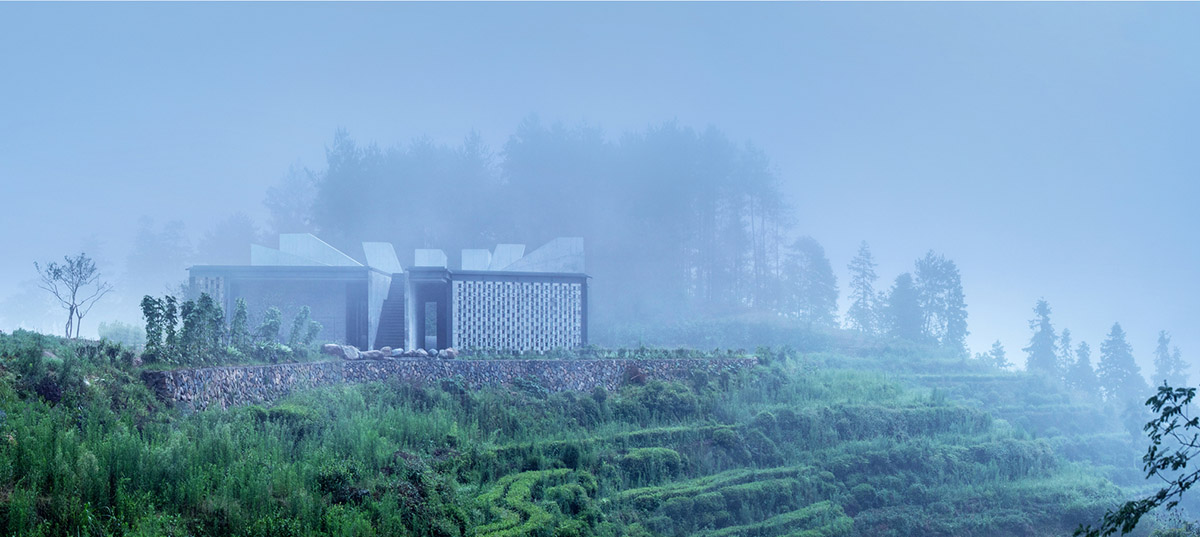
Looking from the hills, the water surface reflects the sky and its surrounding. The building transforms into a monumental platform with eight sunlight tubes in dialogue with nature.
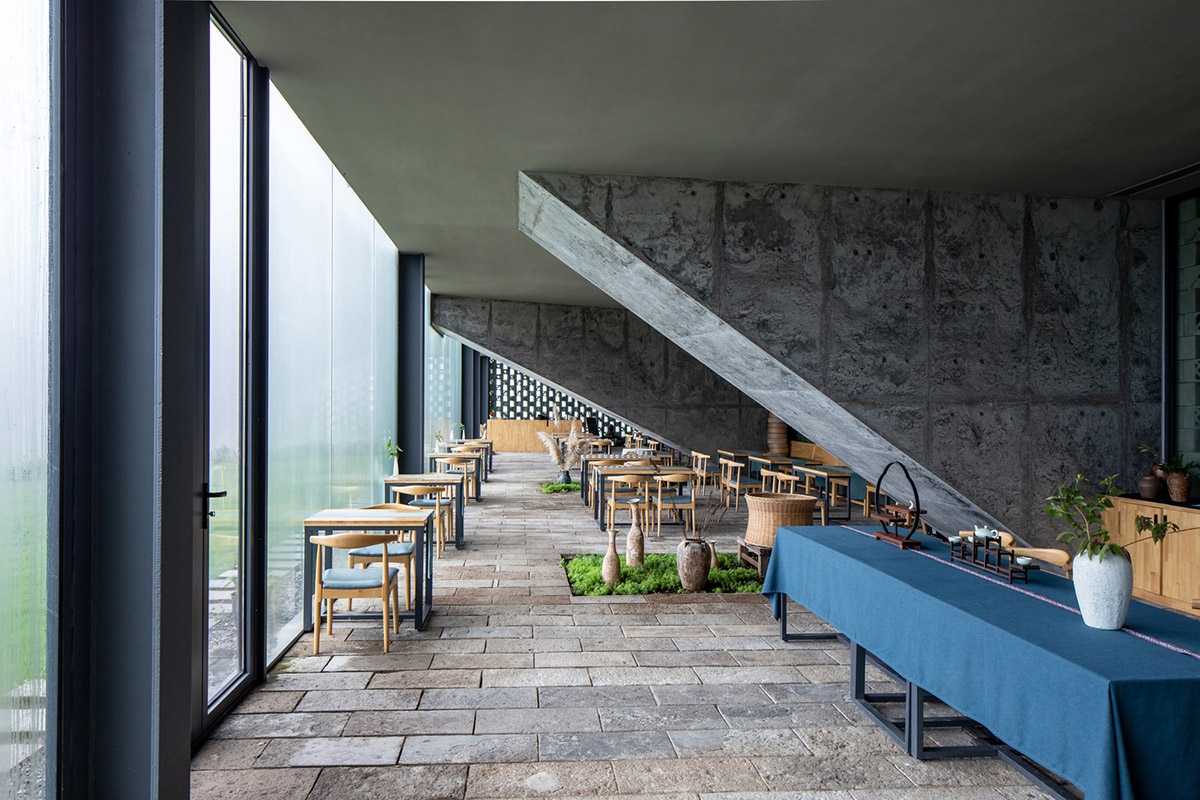
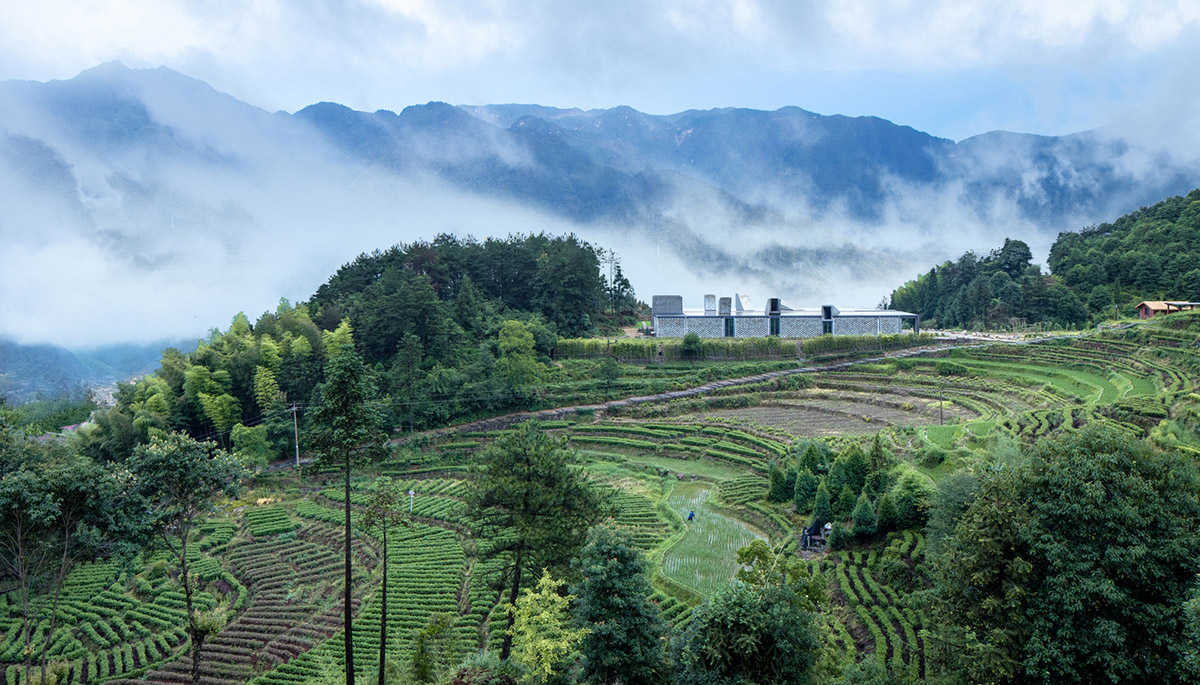
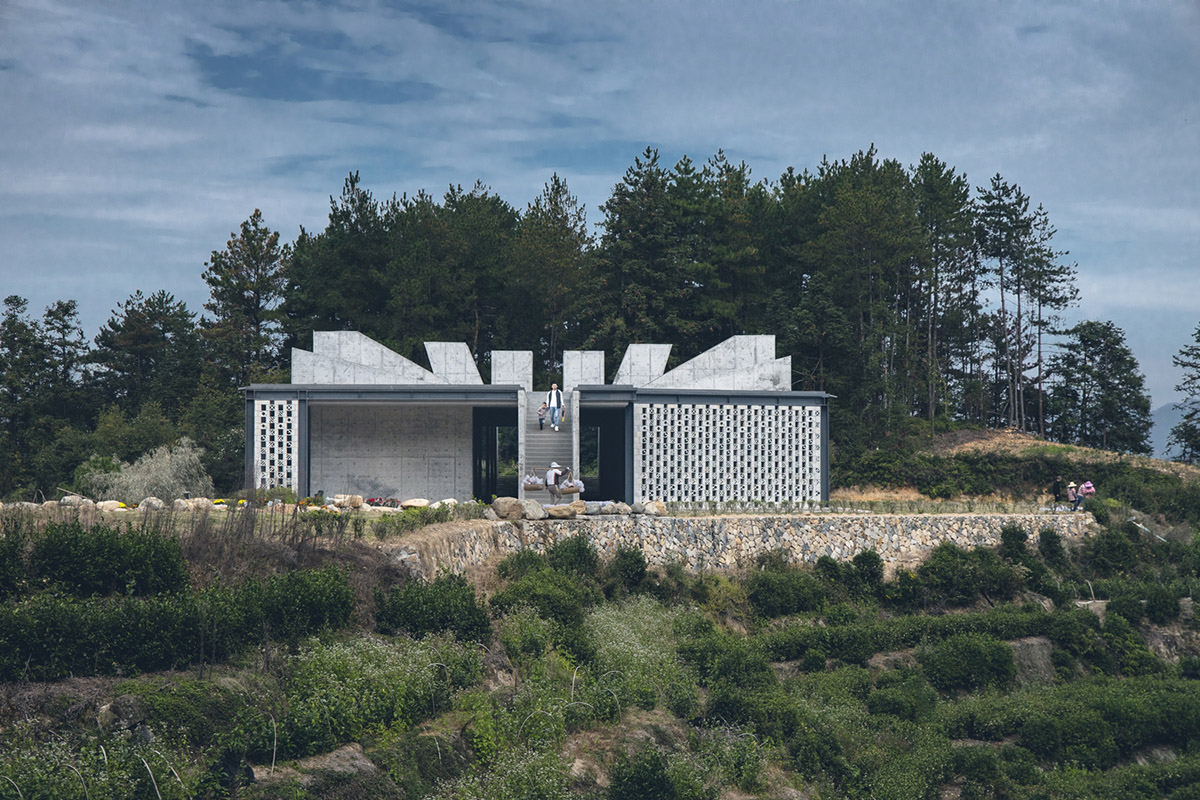

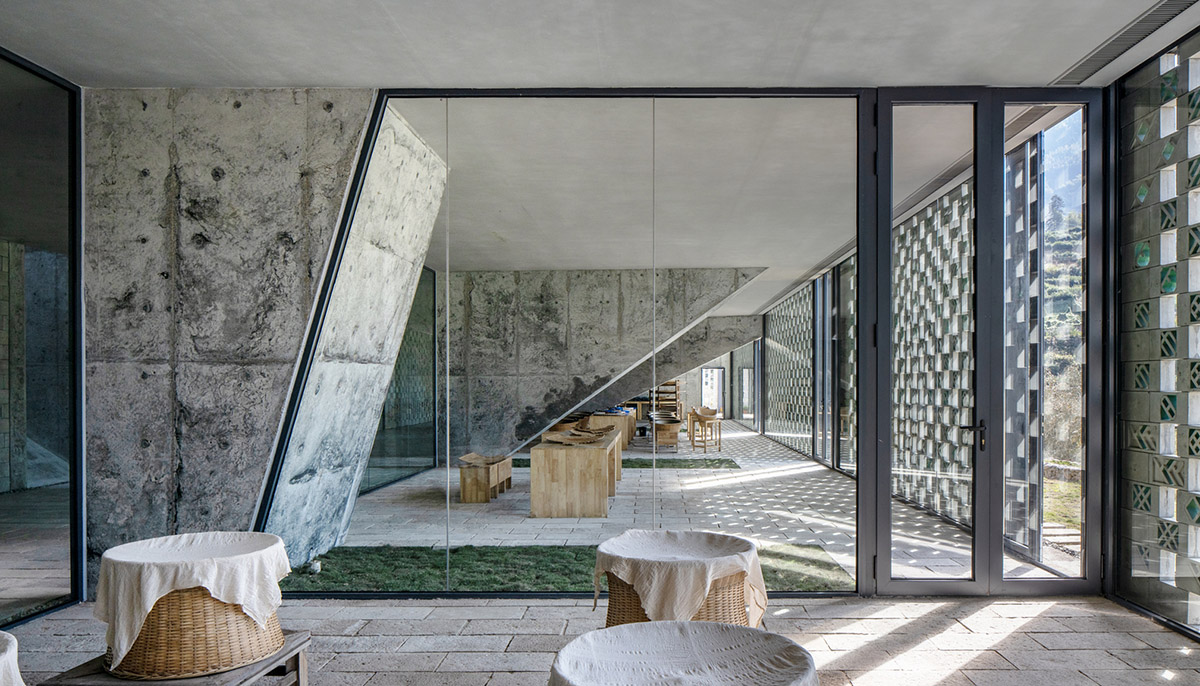

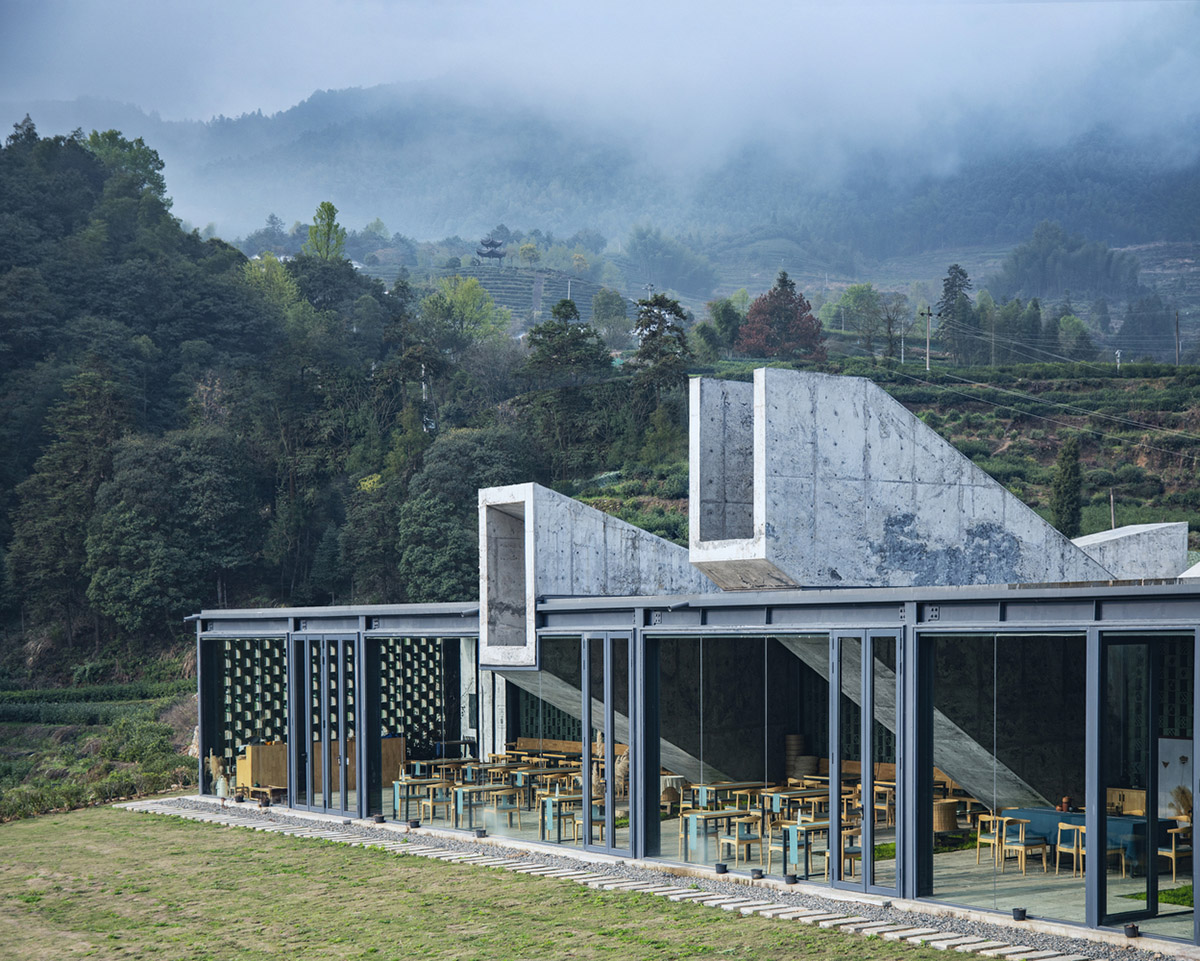
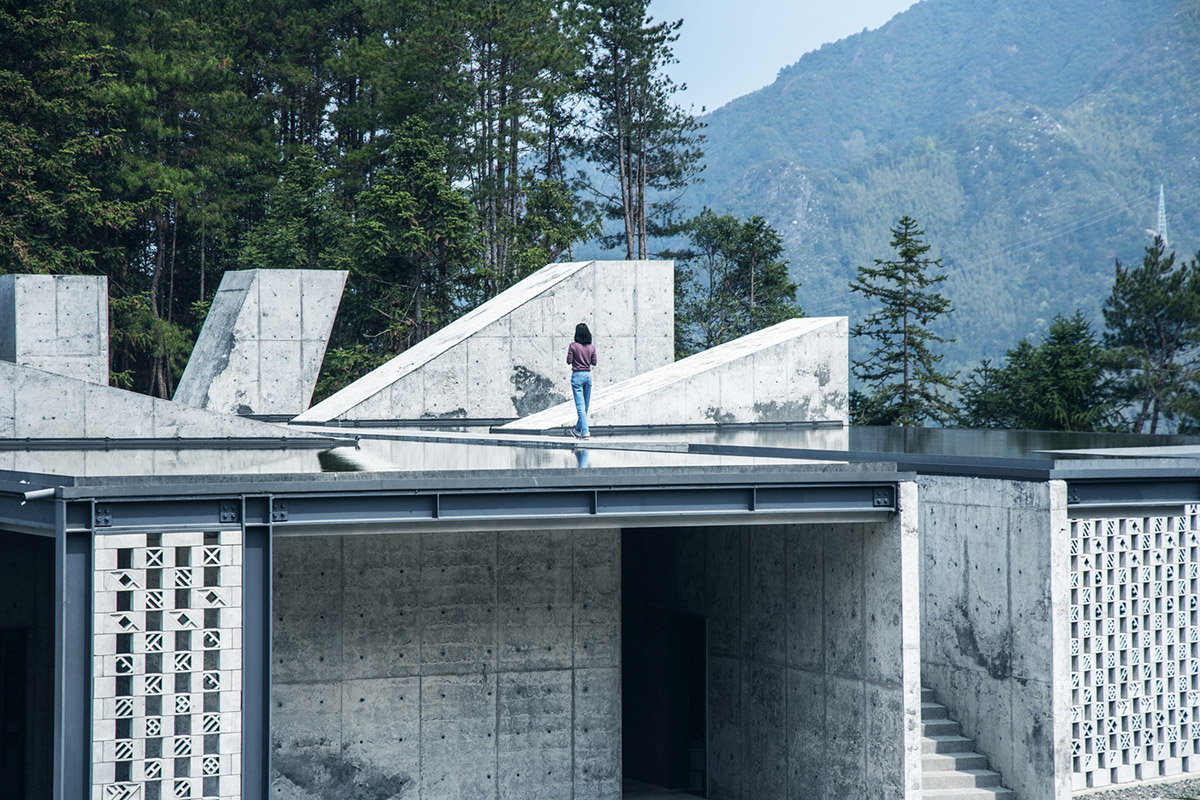


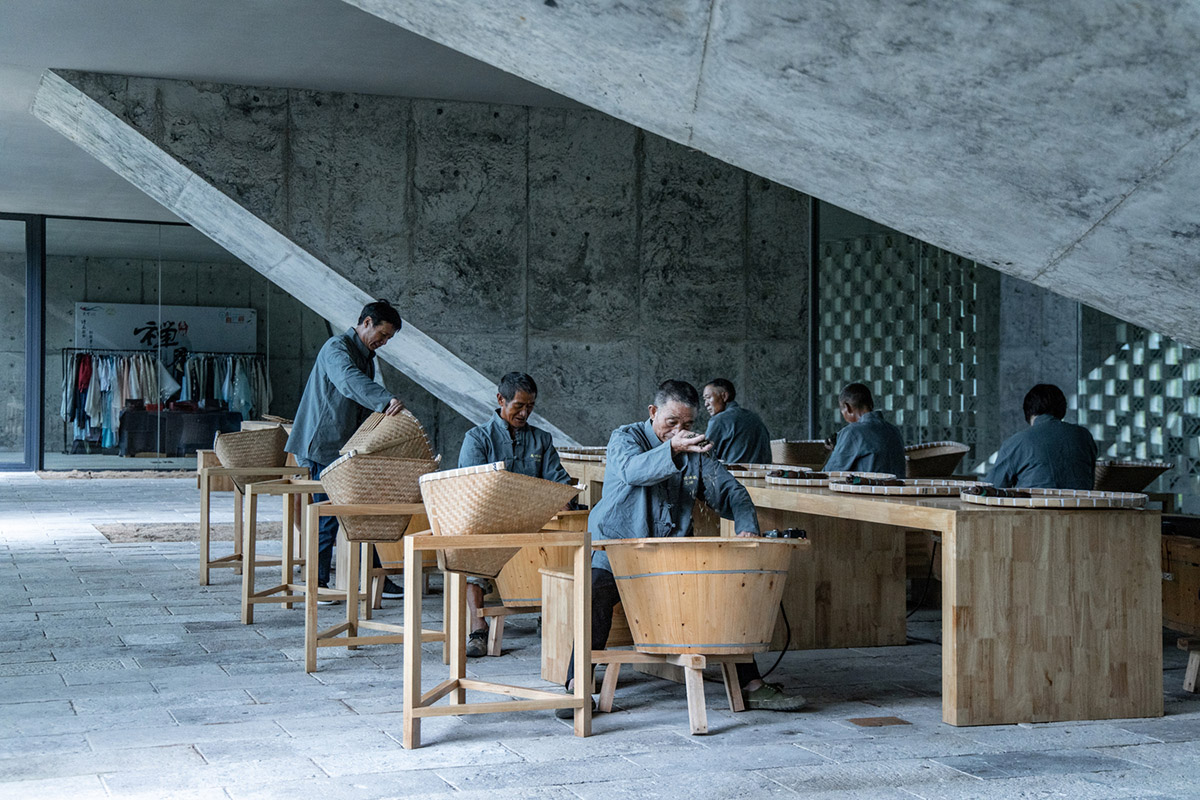
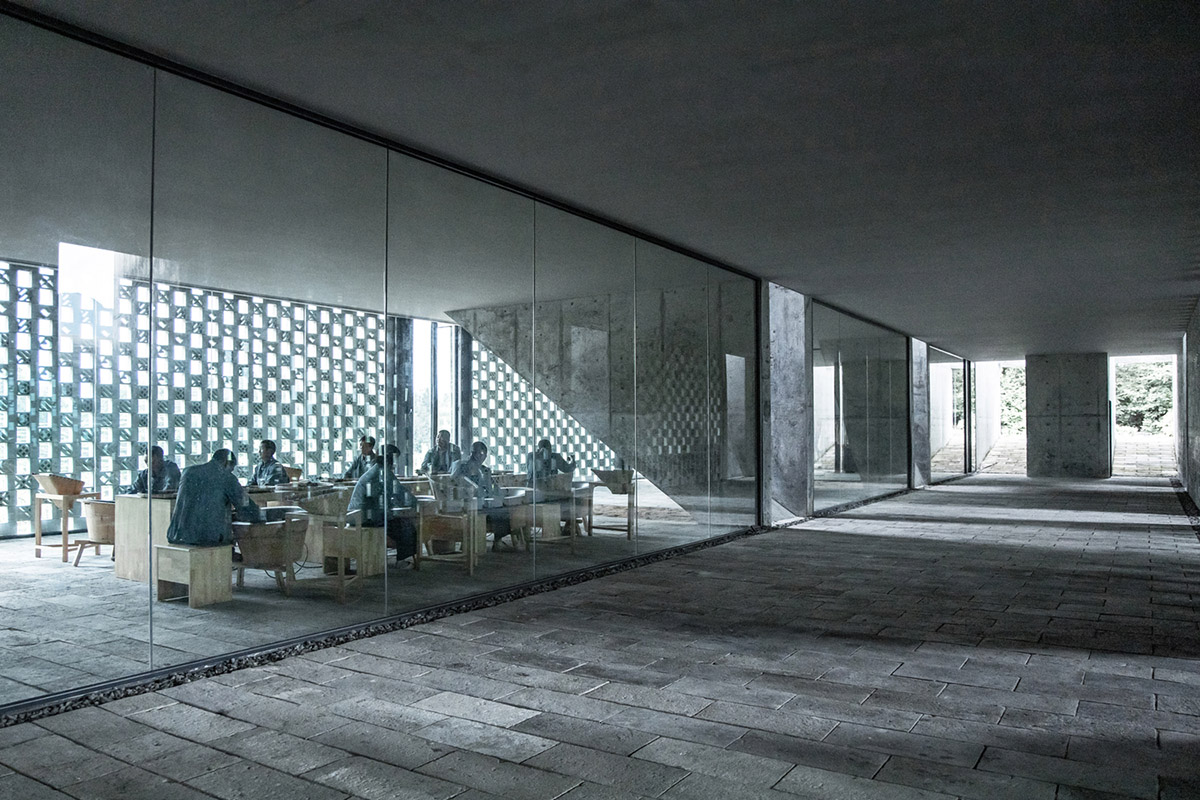

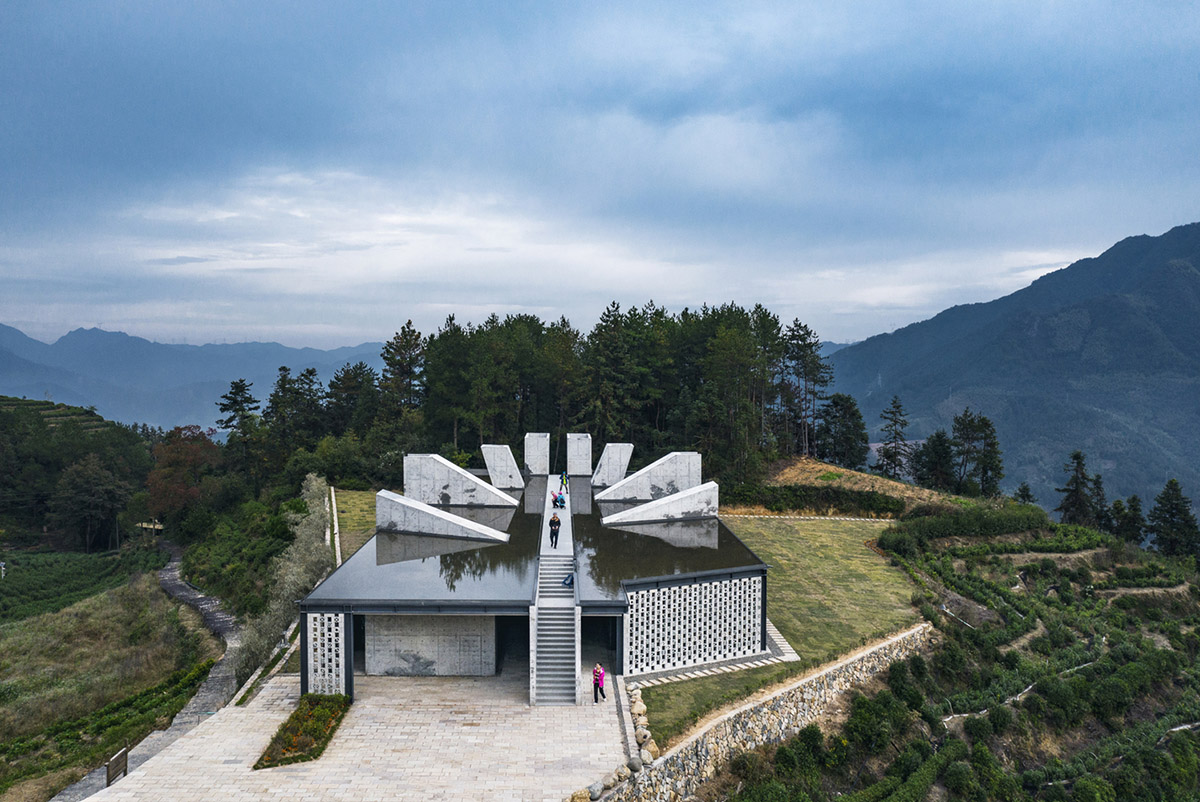
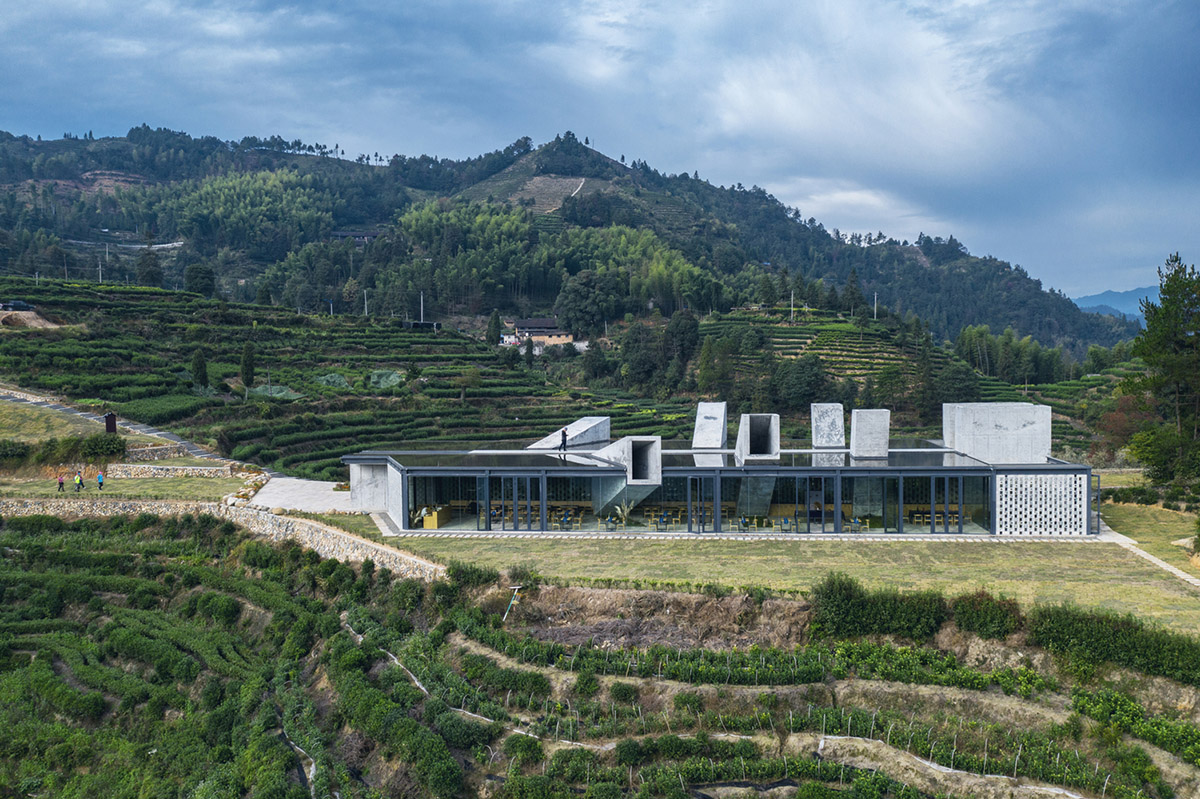
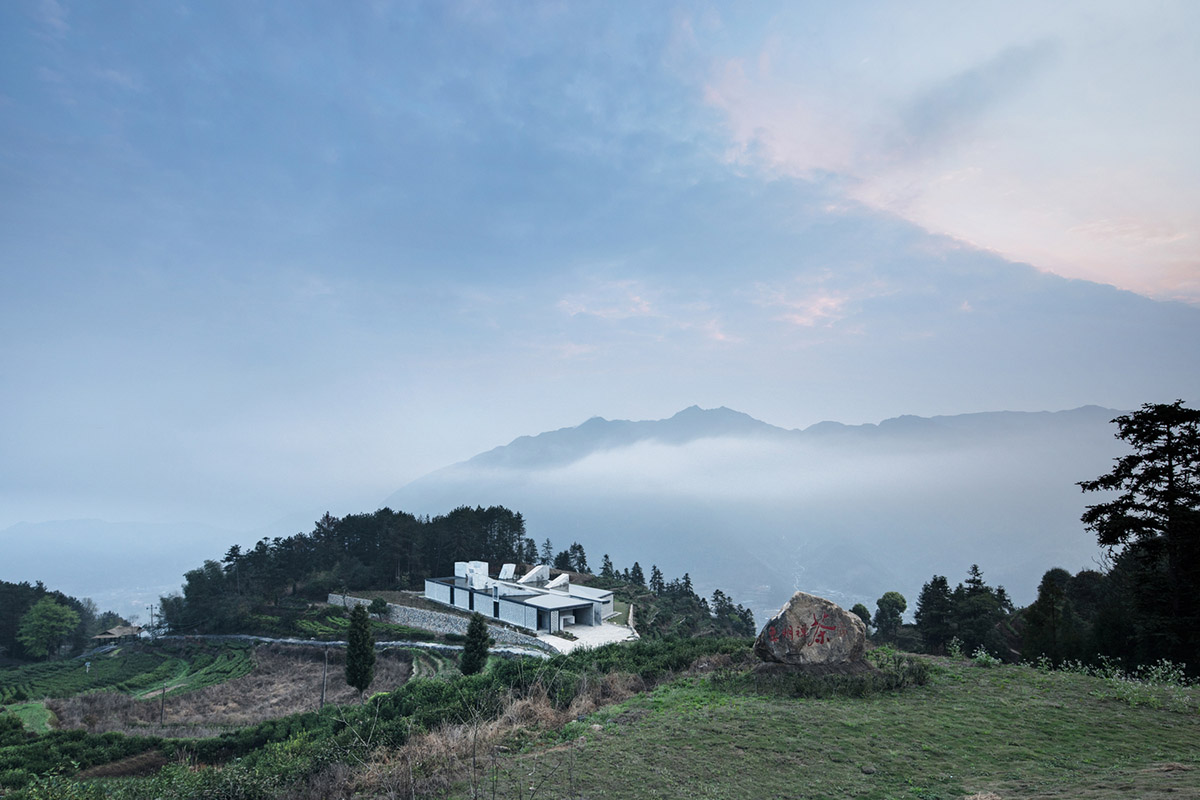
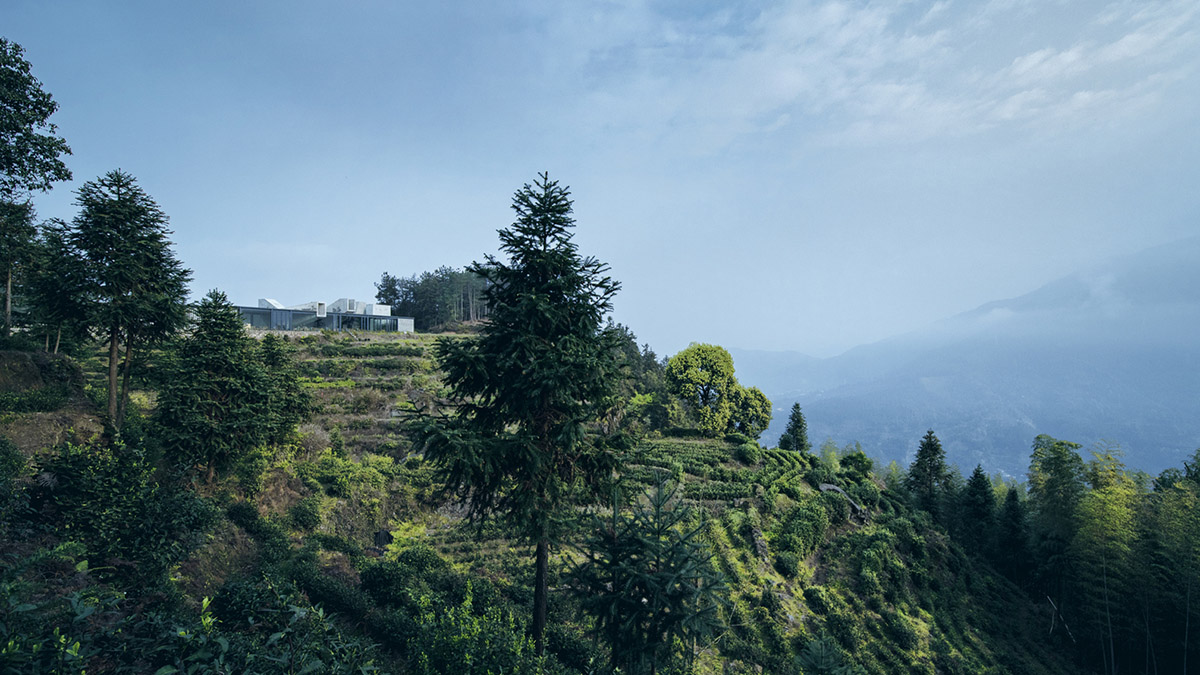
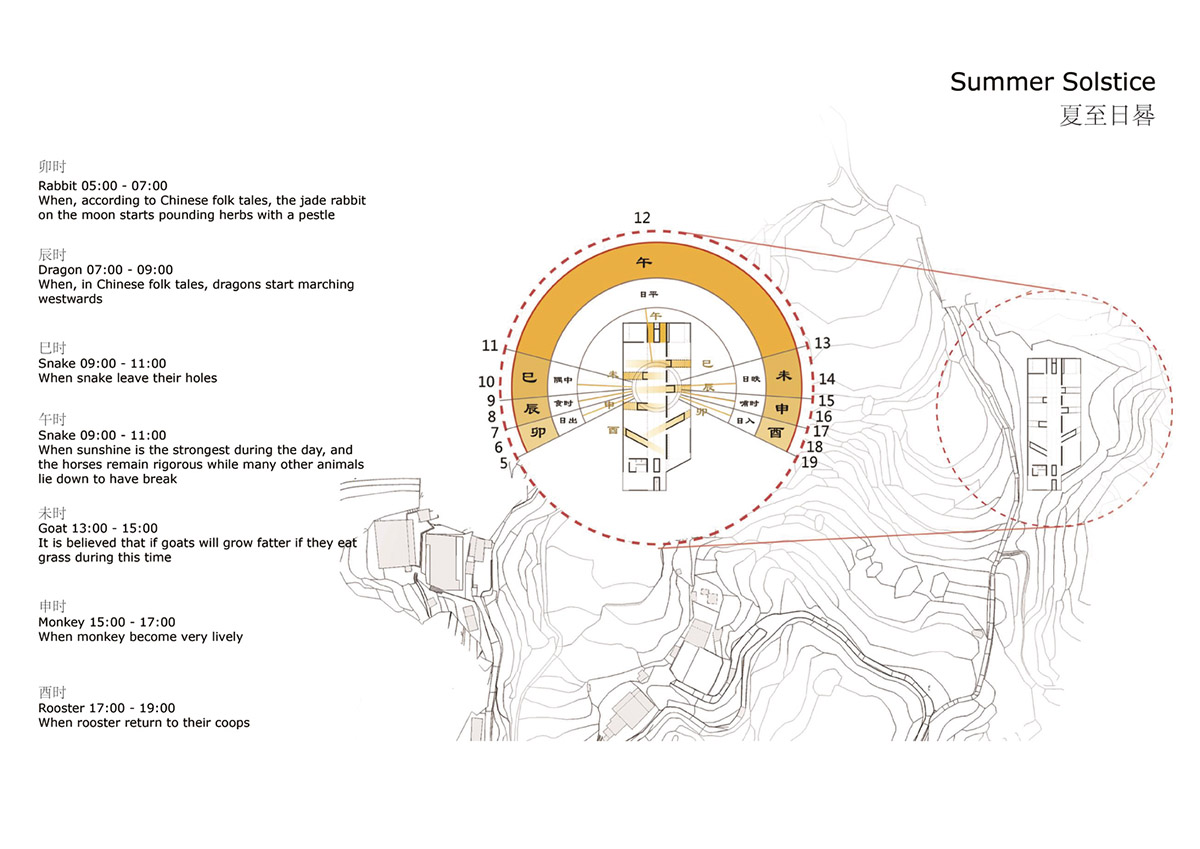
Summer solstice
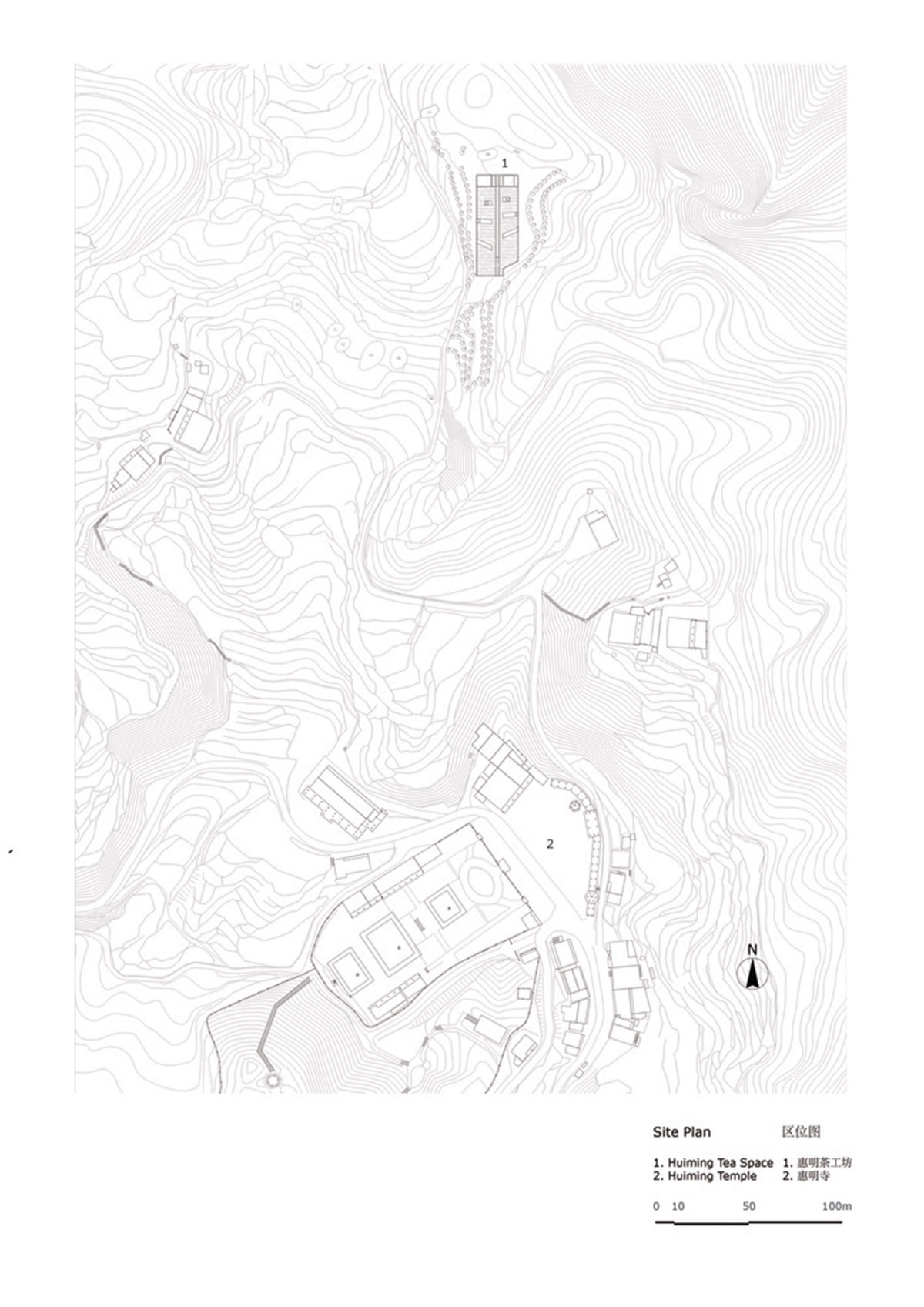
Site plan

Functions

Brick drawings
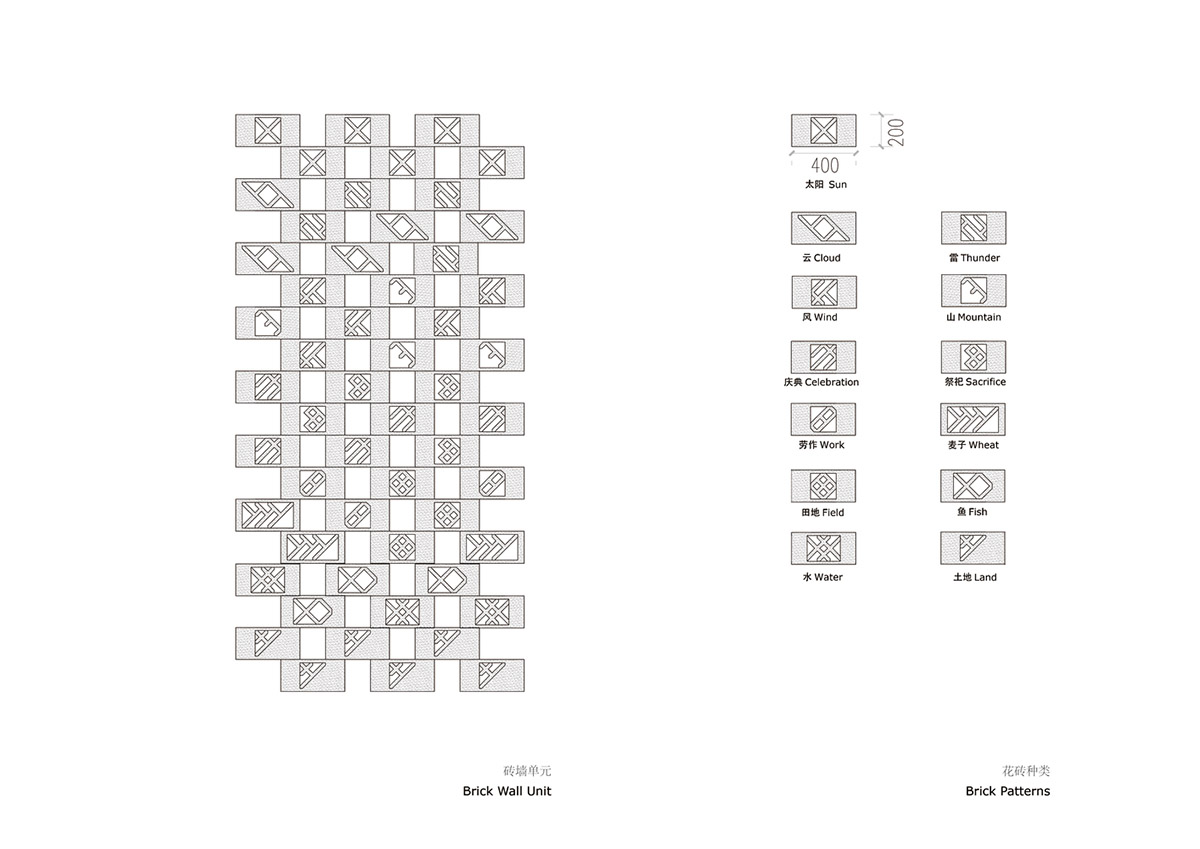
Brick patterns
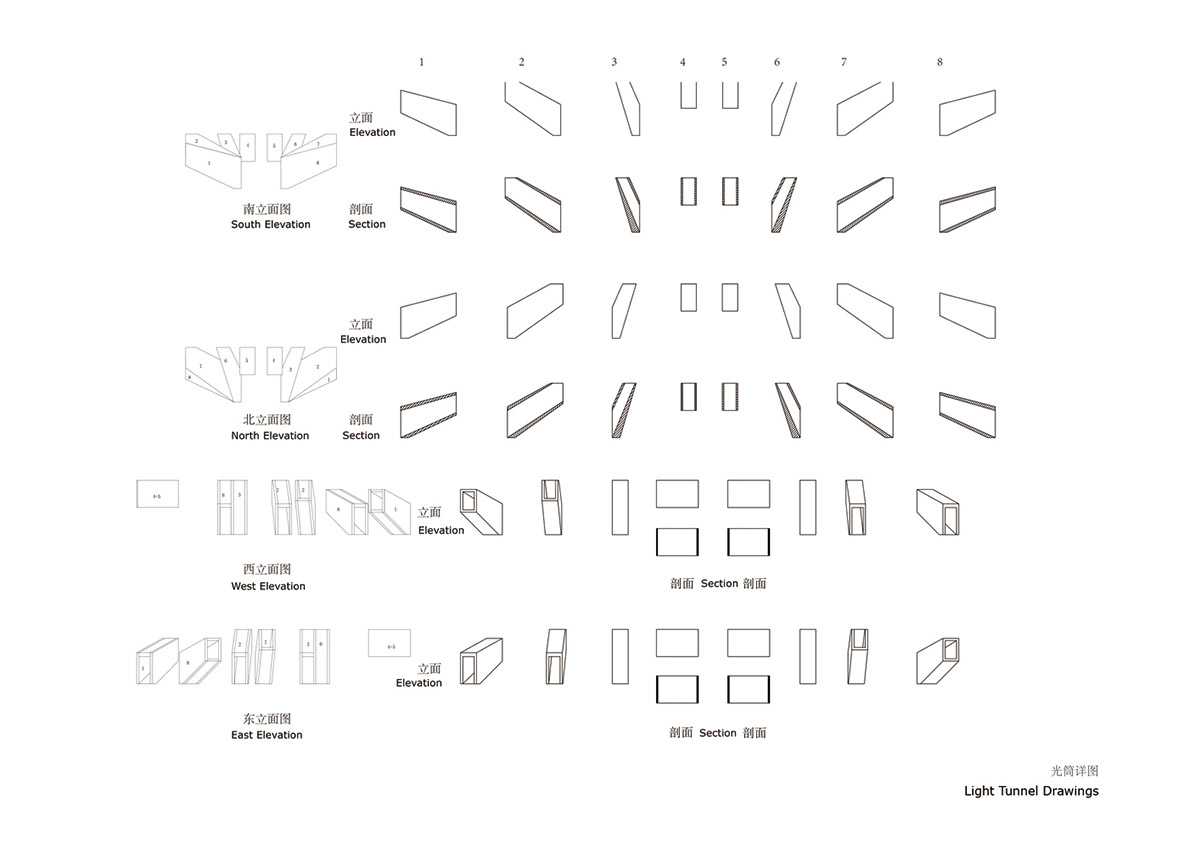
Light tunnel drawings

Axonometric diagram

Axonometric diagram
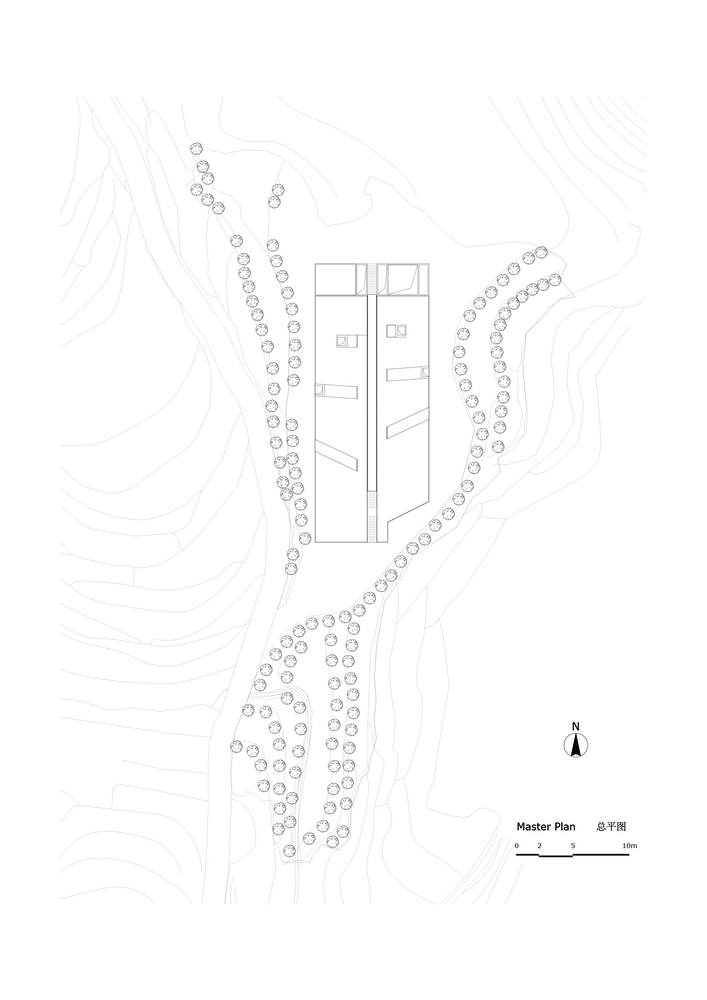
Master plan
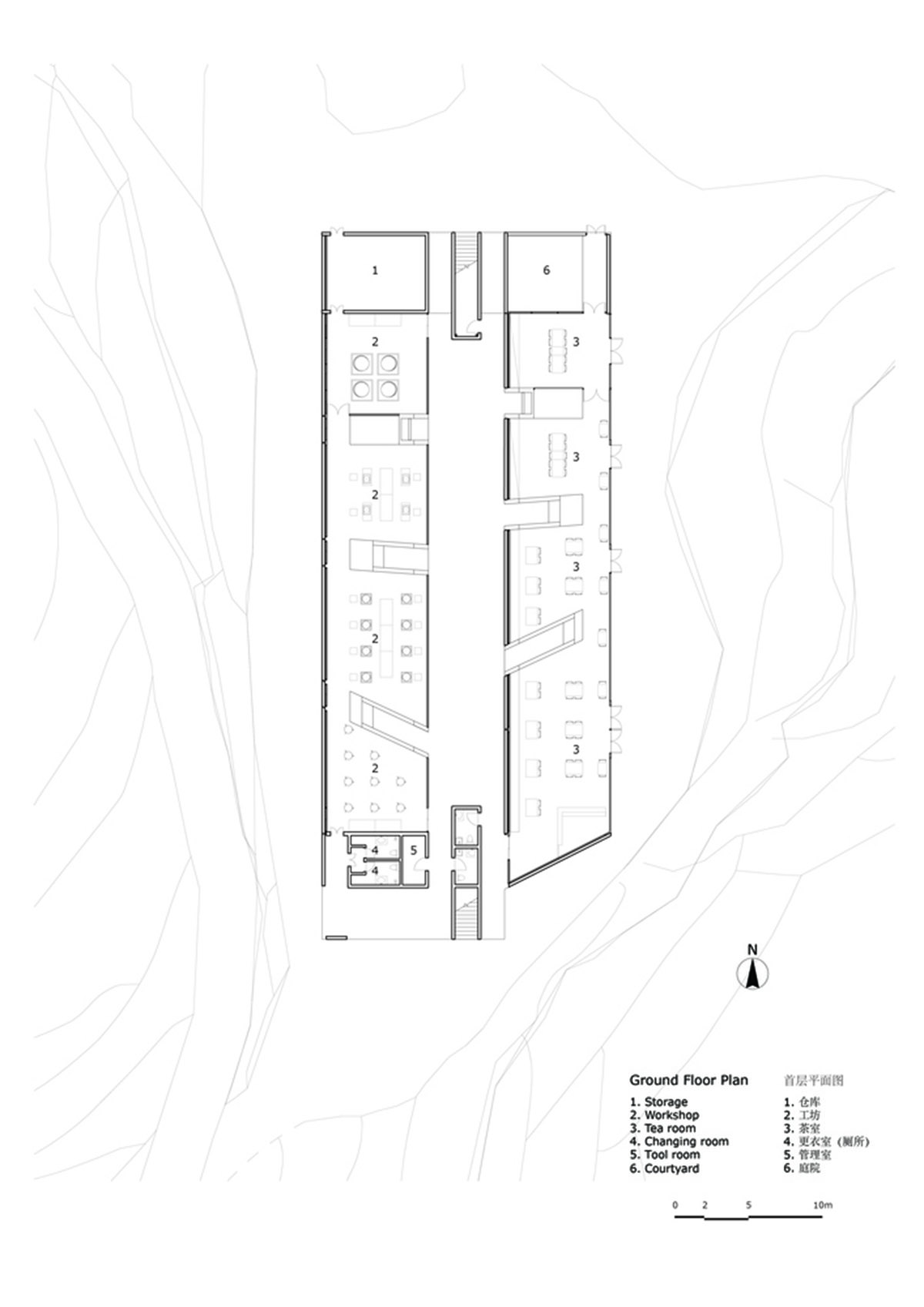
Ground floor plan

Elevations

Section

Section perspective

Section
DnA_Design and Architect is an interdisciplinary practice addressing our contemporary living environment, both physical and social, from scales small to large.
DnA's approach to projects starts with research and discussion on context, program, and their interaction, which we believe are the fundamental elements, or the dna, that will define design and architecture, to adapt, engage, and contribute to our society of multiplicity and complexity.
Project facts
Project name: Huiming Tea Space
Architects: DnA
Location: Lishui, China
Size: 934m2
Date: 2020
All images © Ziling Wang unless otherwise stated.
All drawings © DnA
> via DnA
